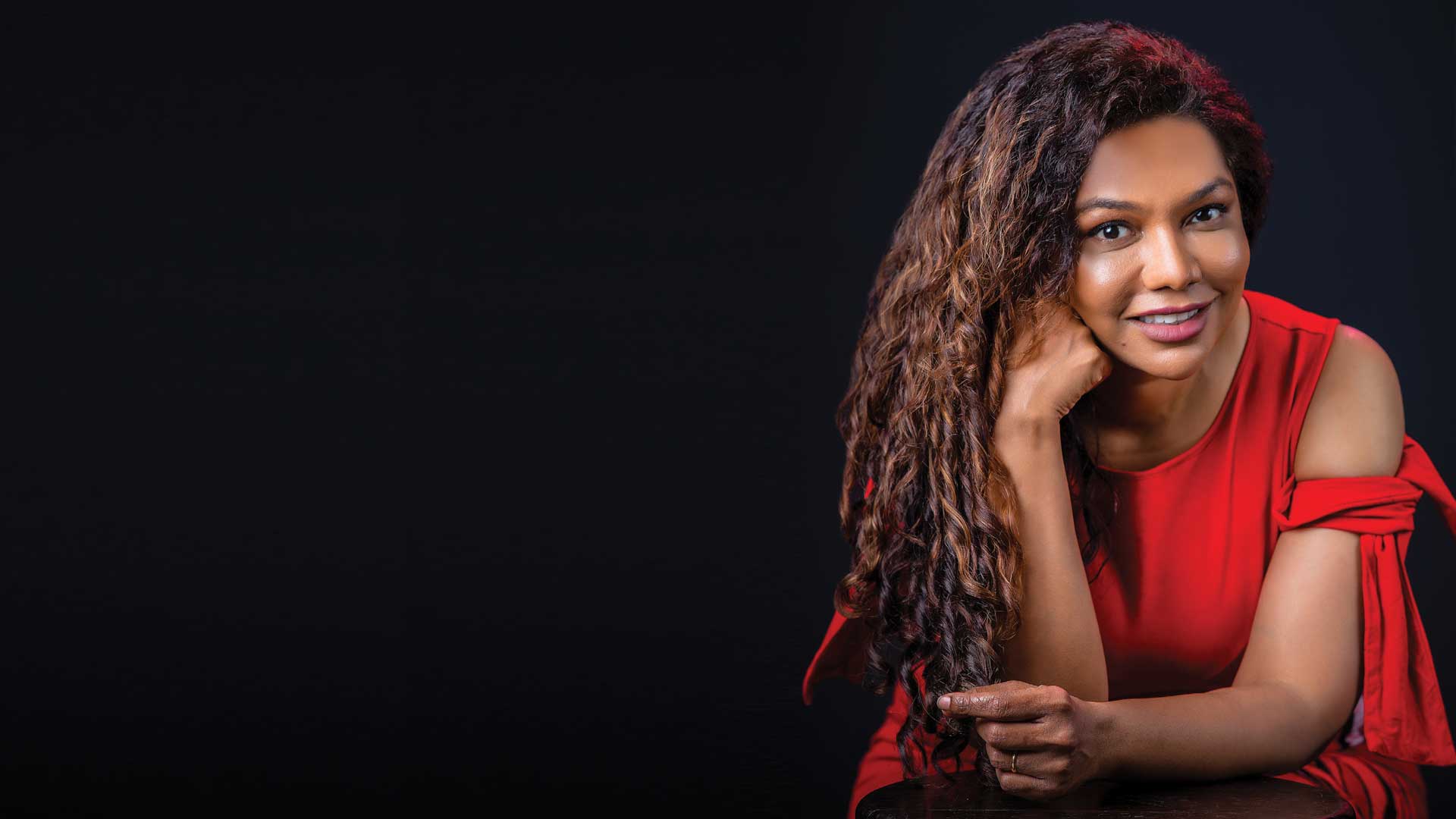
HERE’S WHY GOING COLD TURKEY ON SOCIAL MEDIA JUST WON’T WORK
January 25, 2022
LOVING THAT EUPHORIA SEASON 2 SOUNDTRACK?
January 26, 2022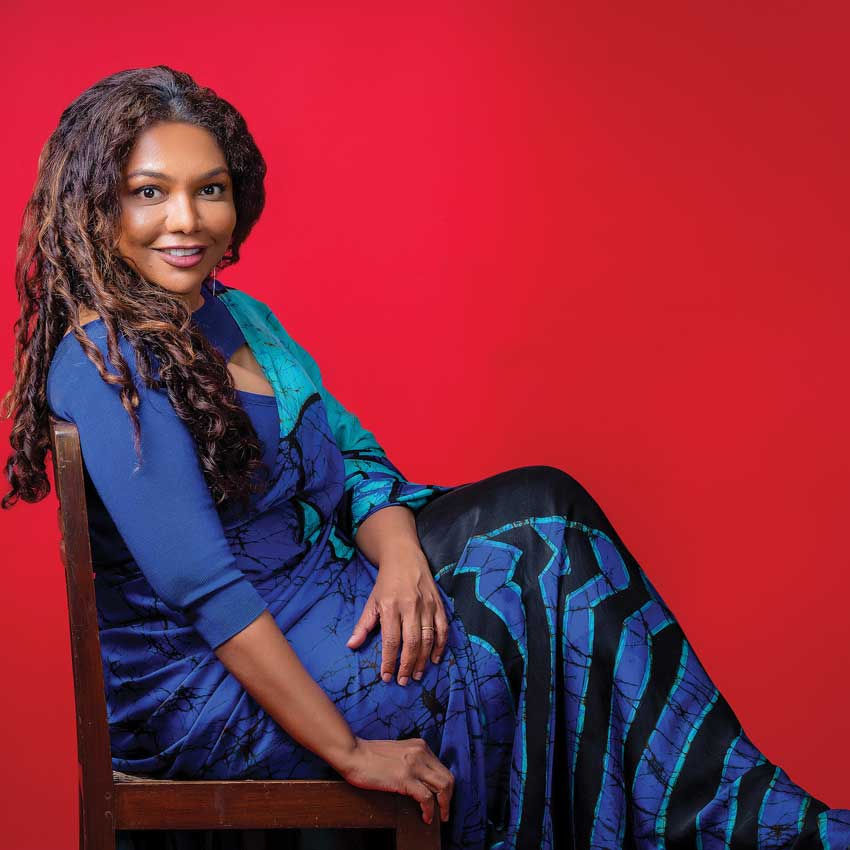
Carving out a niche in the fashion industry, she continues to spread her creative wings with each inspired collection. And being to the manor born, as well as bred with an eye for the tasteful and stylish, Darshi Keerthisena of Buddhi Batiks fame continues to amaze us year after year.
By reviving an ailing craft that had fallen into decrepitude and was virtually forgotten – as well as shaping a sustainable micro economy with it – Darshi has given batik a unique pedestal on which to showcase its uniqueness and creativity in the fashion apparel market.
When asked if she envisions herself going regional or even global, Keerthisena takes a moment to ponder before quietly admitting that she hasn’t. In fact, she feels there’s neither the capacity nor requisite pool of talent in the country at present to consider such a prospect.
This doyenne of the local batik industry also affirms that currently, she’s content to create and develop a niche market offering in Sri Lanka and asserts that this is one of the reasons that her brand does not have to produce in bulk.
Her work has frequented Colombo’s fashion runways, made its presence felt at Buckingham Palace and been sported at the Met Gala. Darshi’s masterfully designed pieces are appreciated by people of all ages; but most importantly, it’s her campaign for ‘circular fashion’ that has us curtsying to the queen of batik.
Following in her well-known father Buddhi’s footsteps (that’s ‘Boodee’ to you!), Darshi Keerthisena has added value to her inheritance; and as with many modern brands of today, Darshi uses technology, platforms to which she has access and that clarion voice to advocate passionately for the niche batik market… all the while campaigning for circularity and the positives of not discarding used clothes.
As a trailblazer, she is an inspirational as well as a seasoned designer to whom many youth look for motivation and guidance – her designs tell a story and every piece is woven with care. And they’re harmoniously integrated through the use of colours and fabrics with which she has spent years surrounding herself.
With a mane of curls and bright smiling eyes, Darshi narrates her life story and tells us about the mischievous little girl who hated wearing clothes but loved climbing trees, and how she discovered a lifetime’s passion in her parents’ batik workshop backyard.
Ashwini Vethakan sits down for a tête-à-tête with the textile and fashion designer, to learn about Darshi’s background and journey, as well as her preferences, hopes and aspirations.
"I’m a go-getter; and a positive person. I have to thank my father for my optimistic attitude"
LIFE
Q: How would you describe yourself to our readers?
A: I’m a go-getter; and a positive person. I have to thank my father for my optimistic attitude. He was always up and about and very positive about whatever he did. That ‘can do’ outlook was very influential when I was growing up.
Q: What sort of child and then teenager were you?
A: I was the kid you’d spot on top of a tree... a real monkey! I was extremely mischievous as a kid – and I absolutely hated clothes! I found clothes itchy and restrictive; and I liked natural fabric and was always playing in the Buddhi Batiks backyard. So you could say that I was immersed in fabric and colour during my childhood.
Q: Tell us about your interest in fashion – when did this begin and why?
A: My first passion has always been in textile design. Growing up surrounded by the designers and artisans at Buddhi Batiks influenced my decision to pursue textile and fashion design.
Q: Do you have any other passions apart from textiles and fashion?
A: Yes, I love photography and architecture.
Q: If not batik, what do you think you’d like to work on in terms of fashion and design?
A: I’d probably be working with embroidery – something along the lines of mixed media printing and hand embroidery. It’s a field I’ve dabbled in and I love the craft side of fashion too. So who knows, I might create a few pieces later, down the line...
Q: Your most memorable moment in life so far is…?
A: I have many memorable moments in life but the one I hold most dear is the birth of my daughter and holding her in my arms for the very first time.
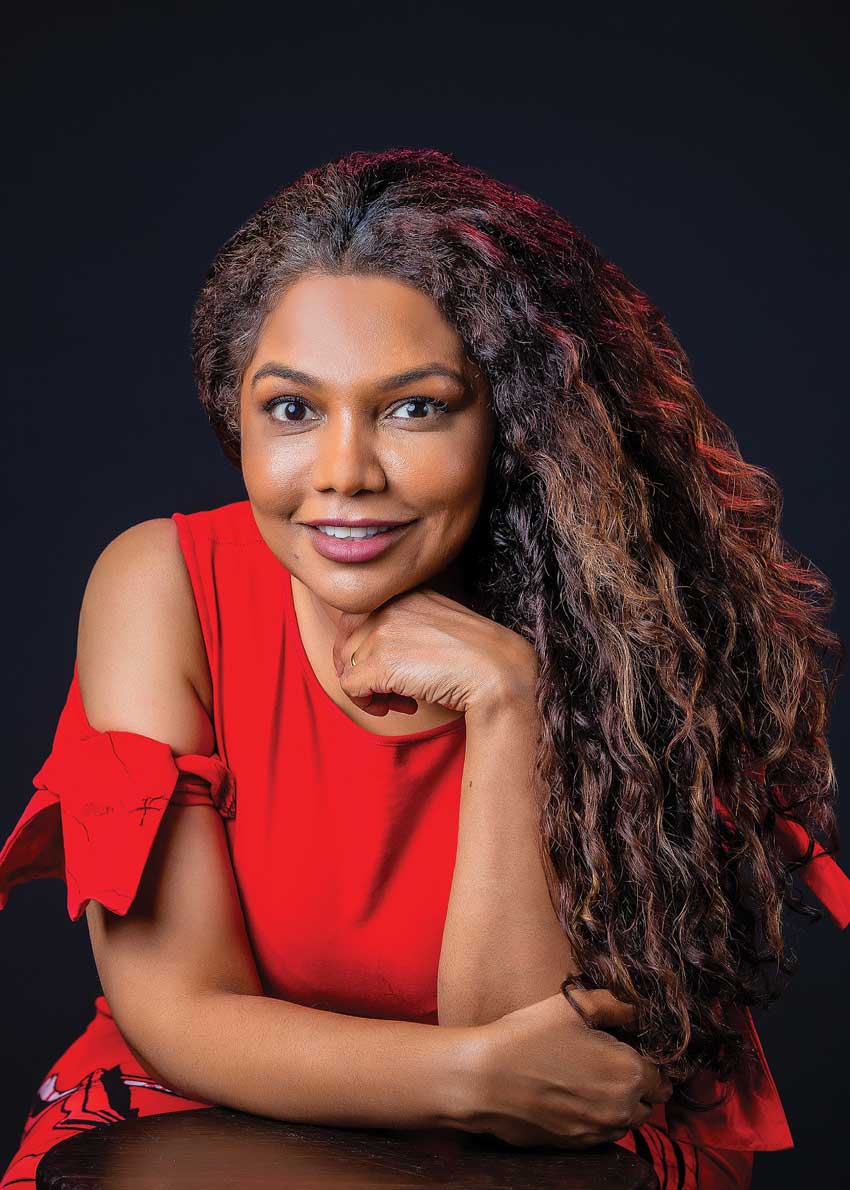
"I was the kid you’d spot on top of a tree... a real monkey! I was extremely mischievous as a kid – and I absolutely hated clothes!"
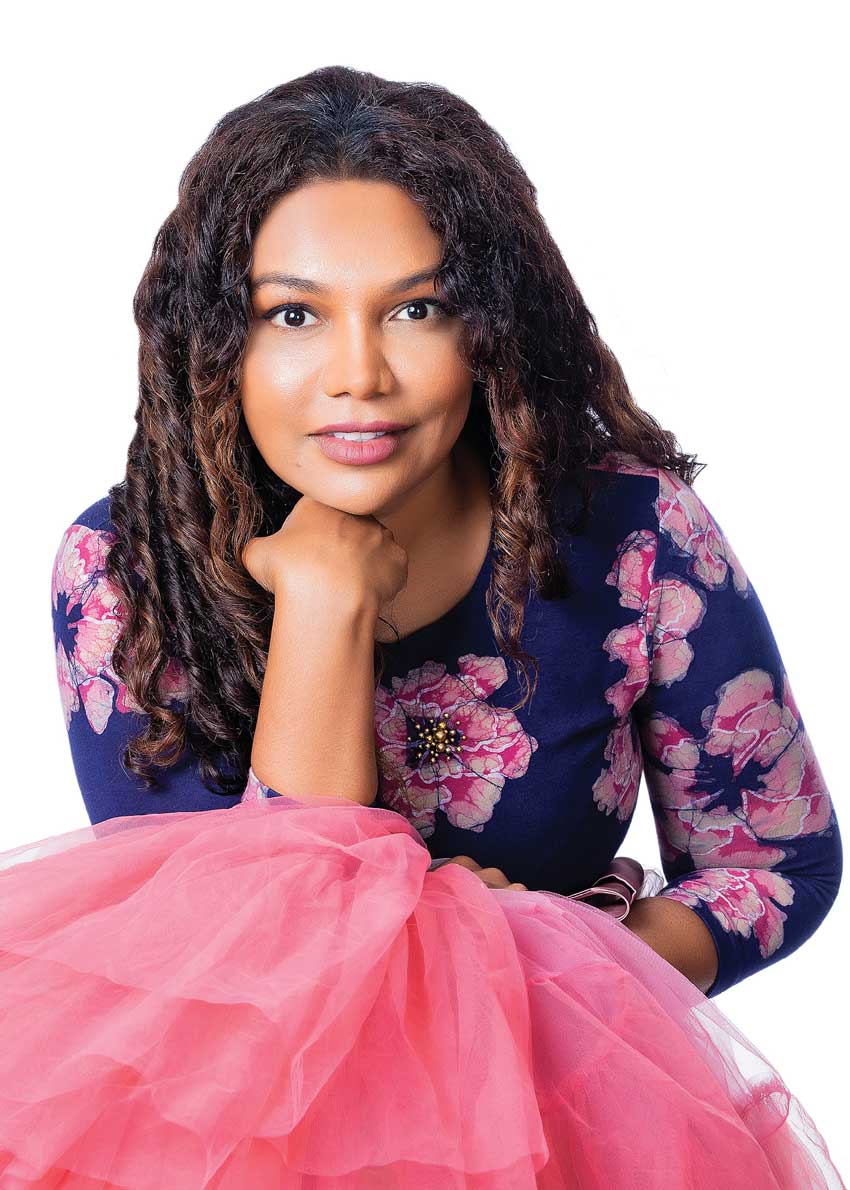
Quick-fire round
Dawn or dusk
Dawn
Netflix or reading
Netflix
TikTok or Instagram
Instagram
Spotify or radio
Radio
Text or call
Text
Calm or rushed mornings
Rushed – although I’d like them to be calm
Walk or run
Run
Wholesome meals or junk food
Vegan junk food
Pants or dresses
Dresses
Dress up or dress down
Dress down
Truth or dare
Truth
Work or play
Both
Stay in or party out
Stay in
Favourites
GLOBAL ICONS
Elon Musk
David Attenborough
DESIGNERS
Buddhi Batiks team
KT Brown
Alexander McQueen
John Galliano
BRAND
Buddhi Batiks
CELEBRITIES
BTS and all K-pop stars
MOVIES
Fifth Element
Back to the Future
HOLIDAY DESTINATIONS
Any place where there’s a beautiful, quiet beach
"I have many memorable moments in life but the one I hold most dear is the birth of my daughter and holding her in my arms for the very first time"
CAREER AND WORK ETHIC
Q: At what point did you realise that this is what you wanted to do for a living? Did the family business influence your decision?
A: Yes, the family business most definitely influenced my decision. As far as I can remember, I always knew I wanted to work in the field of textiles and fashion but I had the freedom to choose!
Q: And what has been the most challenging hurdle in your career so far?
A: I honestly think the COVID-19 pandemic was a hurdle not just for myself but for most business owners in Sri Lanka.
Having to find a way to navigate the pandemic since its first wave back in early 2020 has without a doubt been the most challenging encounter we’ve all faced and managed – and learned how to navigate our way out of it!
Q: Buddhi Batiks is an advocate of sustainable fashion and so are you – so what do you think Sri Lanka lacks in terms of circular fashion?
A: The biggest problem sustainable fashion has encountered is the lack of knowledge as to what it is about.
I feel that once it became a constant topic of discussion, many different age groups embraced it as a new lifestyle choice.
And I feel there was a lack of circular products but we are a learning population – and I believe we’re slowly getting there especially with designers now approaching a more circular sense of style in their work.
Having said that, some of the old Sri Lankan habits have always been sustainable ways of life.
Q: Which social problem is your priority right now?
A: Training new artisans in the batik craft is a priority, both to sustain the craft and as a self-employment opportunity.
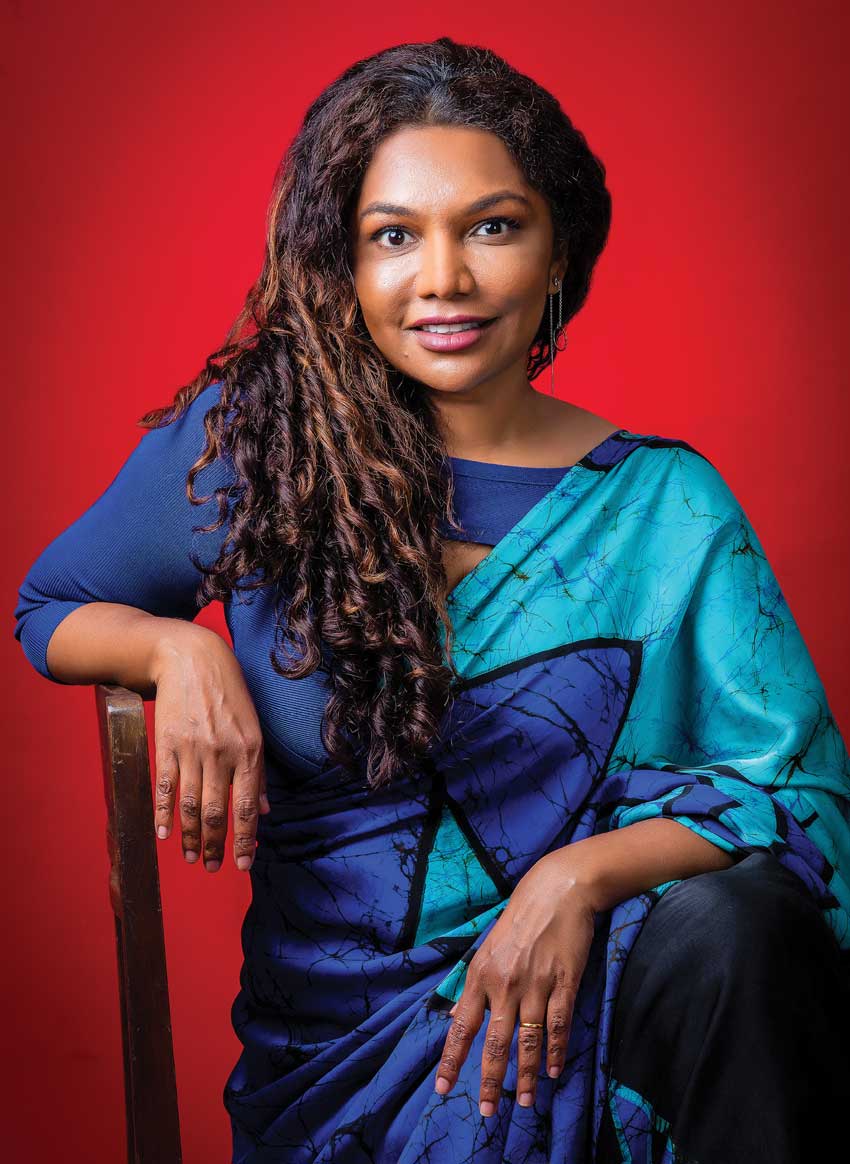
Q: And the least favourite part of your job is…?
A: I don’t like the admin side of things!
Q: Could you outline a few social initiatives you’ve spearheaded – and why they are important to you?
A: The biggest social initiative is that of promoting the batik craft. Upon completion of the Young Fashion Entrepreneur – for which I represented Sri Lanka as the local winner in 2007 – I wanted the batik craft to be a mainstream sector in Sri Lanka, similar to how it was before the civil war.
I can proudly say that as an industry, we have been able to transform batik into a vital part of our culture again. It has been especially helpful during the pandemic since batik is a good income generator to people working from home.
In addition, it was especially helpful during the pandemic since batik is a major income generator for those working from home.
Q: Is there an activist you would wish to work alongside – and why?
A: We support anyone reviving local crafts or working on educating children, and helping animals and causes.
Q: Your pieces have been represented on international red carpets… Have you considered opening a chain of stores globally?
A: We do export but haven’t thought of opening our own stores overseas as yet. This is mainly due to the fact that we don’t have enough products. Currently, we’re training more artisans to increase capacity.
Q: What advice would you give young designers and green activists aspiring to follow in your footsteps?
A: We have over 2,500 years of history and cultural heritage. If we draw from that, we can create something authentic.
Learn to work with grass root organisations as you will be able to support the community while also supporting yourself.
"I can proudly say that as an industry, we have been able to transform batik into a vital part of our culture again"
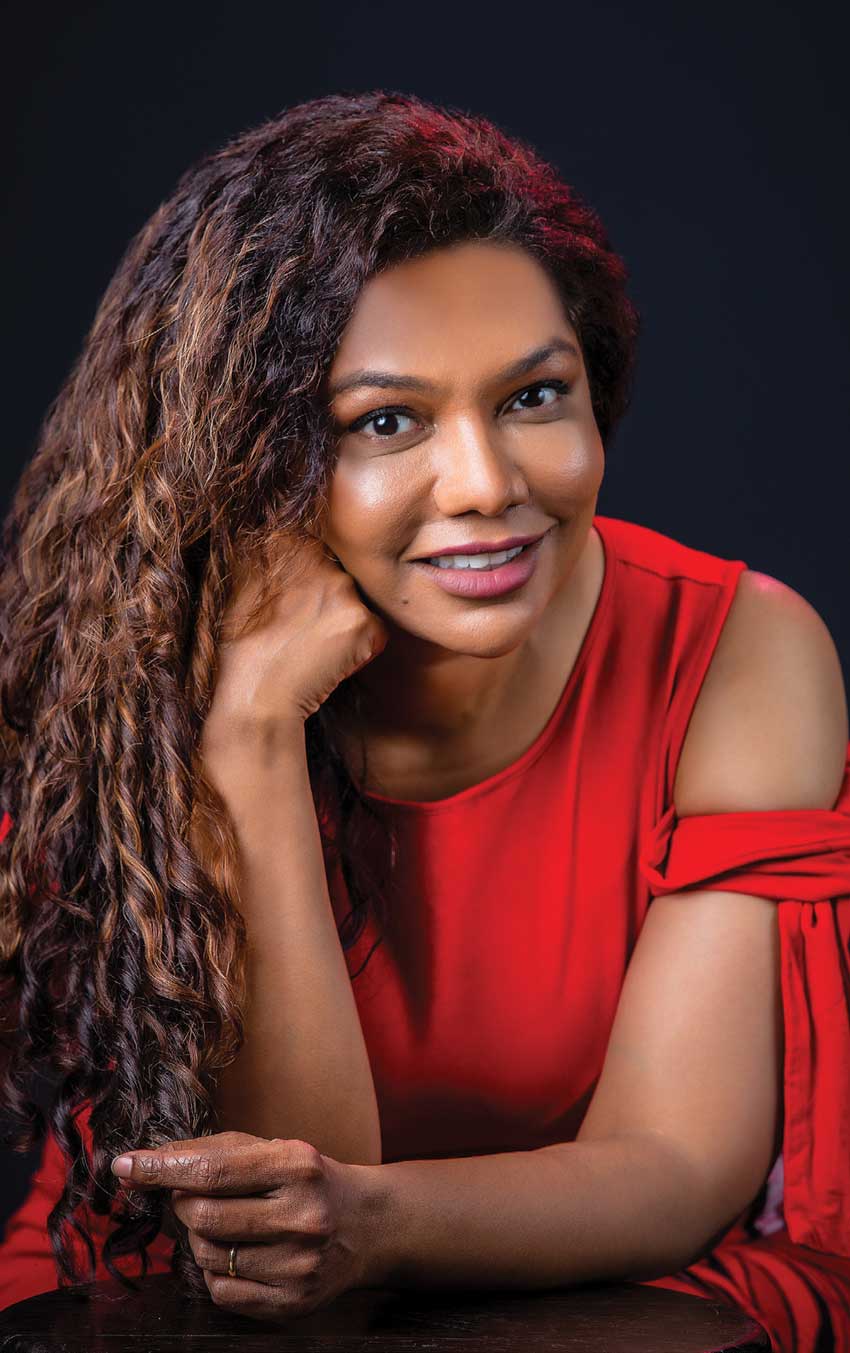
LIFESTYLE
Q: What is your definition of ‘success’?
A: Having a calm and peaceful mind.
Q: How would those in your closest circle describe you?
A: As someone who is a little crazy and a loyal friend.
Q: What are the five items that you always use?
A: My phone, hand sanitiser, a Buddhi Batiks sari and a pair of comfortable shoes.
Q: And what does a typical day off look like?
A: I spend the day with my daughter – and indulge in some shopping and spend time at the beach. Sometimes I take my daughter on a tour – which we call an ‘art tour’ – to galleries, museums or temples and churches, where there are beautiful frescos and paintings.
FUTURE
Q: How would you describe the impact of your career on your personal life? Are there any aspects of it that you hope will change on the way forward?
A: My career has helped me to grow and appreciate all the opportunities that have come my way but there is also a lack of time. I would like to be around my family a little more – and I’m working towards it!
Q: How invested are you in your personal development? And how do you manage your physical, mental and spiritual health?
A: I wake up early. I take time out to think of what I have to do on that day. Sometimes I watch K-dramas as it relaxes me.
Q: If you could change one thing about yourself, what would it be?
A: I’d learn to better manage my time.
Q: And what’s next for Darshi Keerthisena?
A: I would like to felicitate my parents for their contribution to the batik craft in Sri Lanka.
"Learn to work with grass root organisations as you will be able to support the community while also supporting yourself"
About Darshi
BIRTHDAY
31 March
EDUCATION
Holy Family Girls’ School (Wennappuwa)
St Bridget’s Convent
La Salle College of the Arts (Singapore)
Birmingham City University (UK)
London College of Fashion
FAMILY
Husband (Johan)
Daughter (Arya)
HOBBIES
Painting
Going to the beach
Textiles and craft
Surfing the internet
ALWAYS WANTED TO BE
A textile designer
AMBITION IN LIFE
To promote more love and kindness towards animals
LOVES
Vegan food
HATES
Many ‘dislikes’ but not any ‘hates’ as such
PET PEEVES
People who jump the queue
Liars
MUST-HAVE THINGS
Phone
Mask
Pen
ROLE MODELS
Her parents
MOTTO IN LIFE
Live and let live


